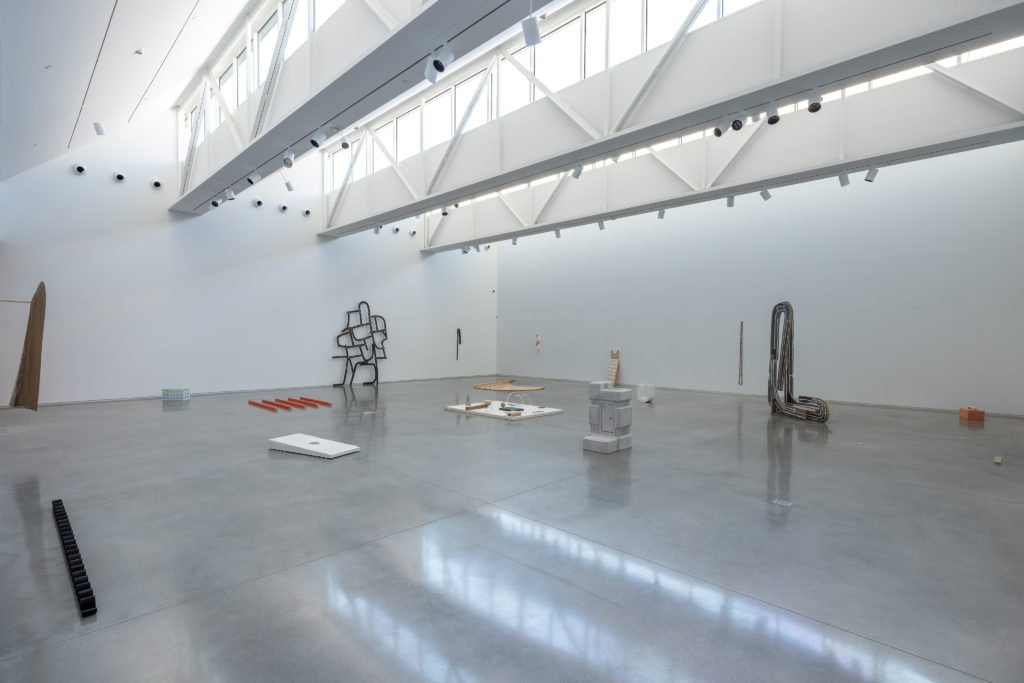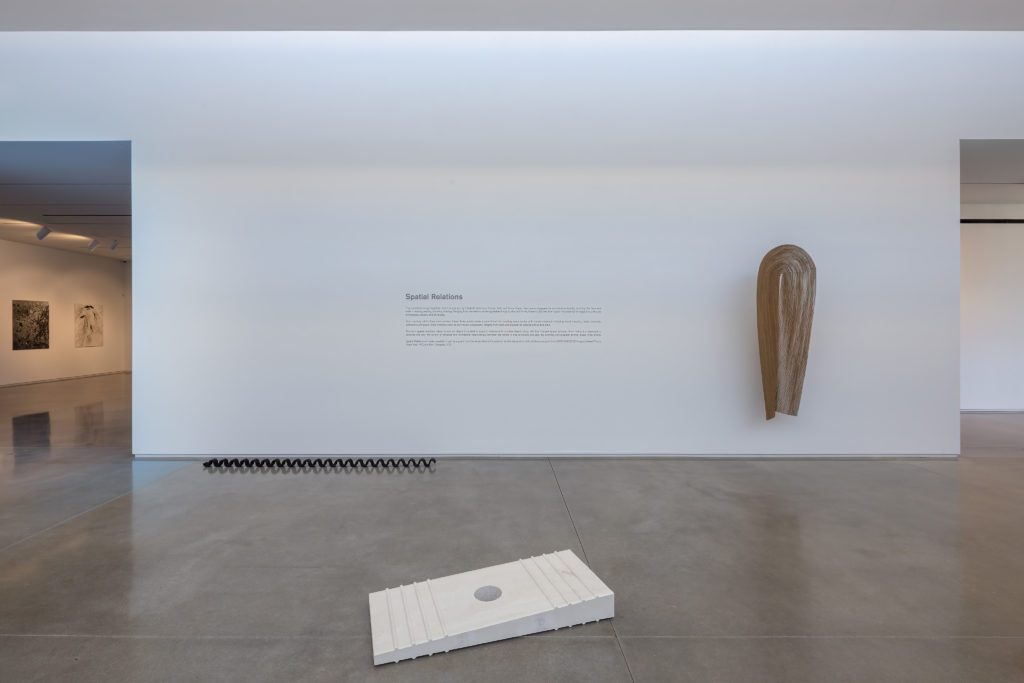Abstract Exhibitions at the CMCA Make Rockland a Holiday Season Destination
The latest shows at the Center for Maine Contemporary Art provide a chance for visitors to escape the cold and think abstractly about narrative, transformation, color, and space.

With a number of shops and galleries to explore, Rockland is a fantastic winter destination for the holiday season and beyond. At the Center for Maine Contemporary Art (CMCA), a suite of compelling exhibitions up through January 9 is another reason to make a festive visit downtown this season.
One of the exhibitions, Ryan Adams’ solo show of paintings, Lessons, examines text as an entry point into a discussion around, and an embodiment of, the tension between visibility and invisibility in the oeuvres of Black artists. The colorful, abstract text-based works enliven the main lobby and central corridor in the museum and set a tone of energy for the other exhibitions.
Also on display, Into Action is a group show featuring photography-based artwork by Jennifer Calivas, Mark Dorf, Ray Ewing, Cig Harvey, Julie Poitras Santos, and Shoshannah White dealing with moments of change and transfiguration in the environment. The photographs of Harvey, Poitras Santos, and White, in particular, open a narrative window for the viewer, showing this transitional moment and letting us feel its impact. Hiraki Sawa’s video projection, Absent, is likewise narrative in nature, revolving again around change and flux as a narrative device, as a gently surreal story unfolds.

In CMCA’s main gallery, Spatial Relations, featuring sculpture by Elizabeth Atterbury, Gordon Hall, and Anna Hepler, creates a sense of connectedness with not only the sculptural artwork but the room itself, with its wide polished floor, high white walls, and radiant angular skylights. Focusing on the floor as the area of discourse, CMCA director Tim Peterson brings the eye down and across the expansive space with this exhibition, rejecting a pictorial reading in favor of a more nuanced encounter with the individual objects.
Color, both understated and rich, is prominent in Spatial Relations, such as in Gordon Hall’s 2018 piece Digits, a floor piece with five long horizontal parts made of colored pencil on wood. The piece resembles a set of cavaletti poles, which are used to train horses to perform specific gaits, and evokes a sense of both obstacle and game. Anna Hepler’s work tends to gesture upwards from the low orientation, as in Golem. Rising from the level of the floor like a massive, tactile sumi ink drawing, the sculpture, built from plywood and dowels, is held together with button-like steel pins, reminding us of its essential nature as a large physical object. Central to both the exhibition as it occupies the space and to the concept of the show as a whole, Elizabeth Atterbury’s Arrangement 3 (in September) encapsulates the visual movement between place and thing. On a low pedestal, nearly level with the floor, a number of Atterbury’s small sculptures—gestural and geometric at the same time—create a stage set for a tiny pantomime, scaled for an audience of mice. The materials listed by the artist include not only glass tiles, cedar, granite, beach sand, and paper but also “mousetracks.”
For viewers who are ready to go high and low to experience the connectedness between objects, Spatial Relations provides a wealth of visual opportunities. And for the visitor to Rockland this holiday season, the CMCA, with its variety of compelling exhibitions and lovely museum shop, provides a chance to come in from the cold and think abstractly about narrative, transformation, color, and space.
Center for Maine Contemporary Art
21 Winter Street, Rockland
10 a.m.–5 p.m. Wednesday–Saturday and noon–5 p.m. Sunday
Absent, Into Action; Lessons, and Spatial Relations are open through January 9, 2022.



